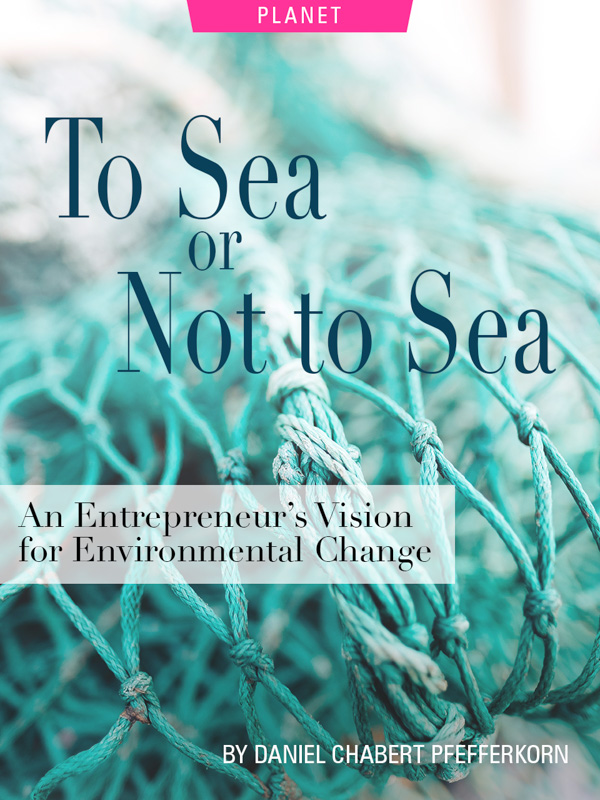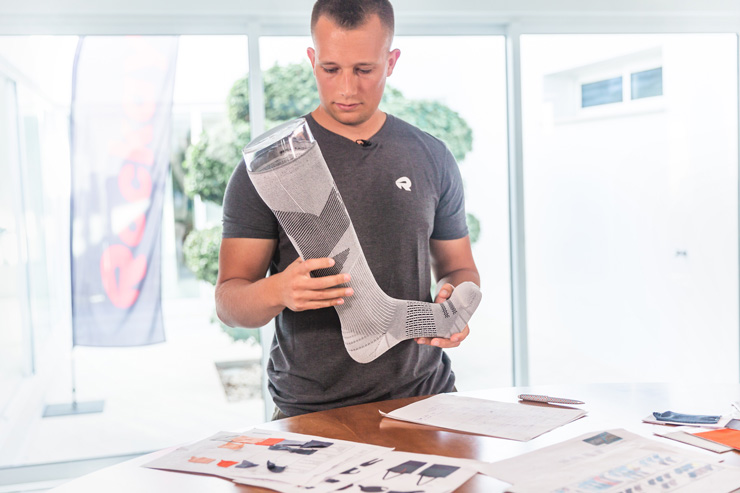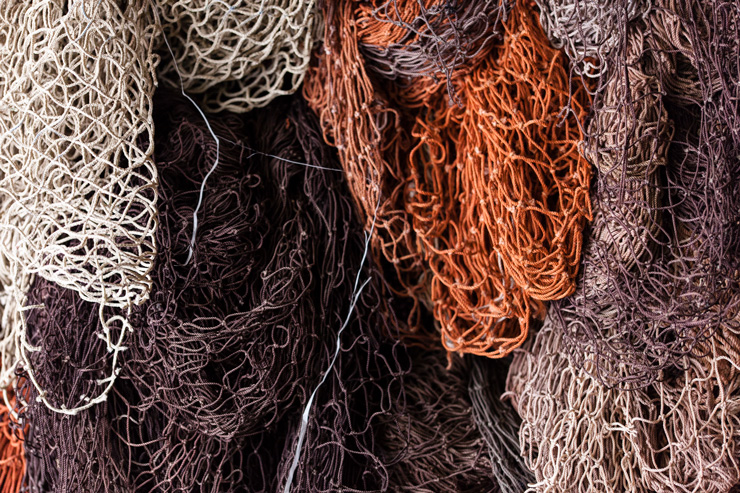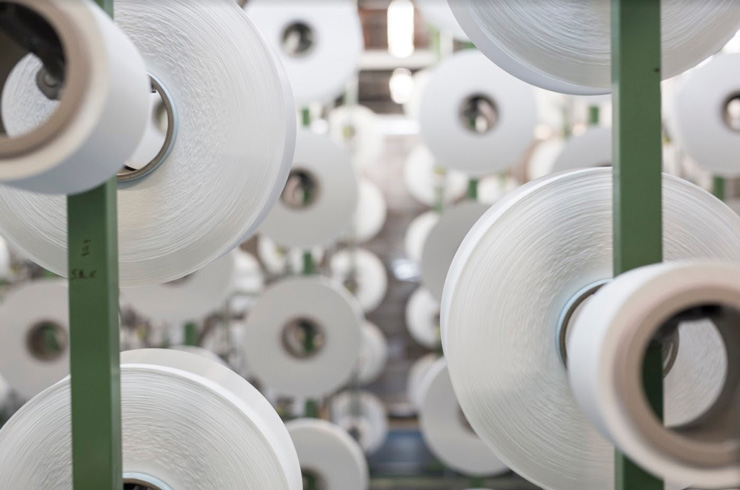
27-year old founder of Rockay, an environmentally responsible enterprise, explores the problem and solutions of the growing ocean pollution crisis
_
You might have read about the statistics of 12.7 million tons of plastic waste that’s dumped into our oceans every year. To break this down, a new study compares this to “five grocery bags per every foot of shoreline” around the world.
Human behavior has led the way to microplastic contamination in the marine ecosystem. It’s not uncommon that studies find examples of microplastics in fish served on our plates.
While this information might be disturbing and difficult to comprehend, there’s a powerful way we can individually scale down this global problem of ocean pollution and contribute to a more sustainable world: conscious enterprise.
When I was about to start my own company Rockay, a premium running apparel brand, I didn’t want it to be just another label on the market that’s chasing after sales, minimizing the manufacturing costs, using the cheapest fabrics, and putting crazy amounts of dollars into promotions and commercials to hide behind the poor product quality. I had a different mission in mind.
Being aware of the environmental crisis we’re facing, I was determined to establish a brand that will make a meaningful contribution to solving this global threat. Fast forward almost two years, we launched a collection of performance socks made from 100% recycled materials and ocean waste.

If I could do it, so can you. Now, let us first understand the scope of the problem, before we get to solutions.
Daily Habits That Pollute Our Oceans
In the extremely busy world we live in, where time is the most precious asset, we often opt for quick and easy solutions to our needs. To name a few: eating fast food, purchasing cheap clothes and chasing deals on all-new, must-have collections (fast fashion vs. slow fashion), buying a plastic bag every time we shop for groceries (as no one remembered to bring and reuse an existing shopping bag), getting a new car every time your brand releases a new model. You get the idea. Much of this falls into the instant gratification category.
All these actions seem harmless and usual, but such behavior causes a lot of damage to our ecosystem. Companies need to keep up with high demands of our consumerist society, to produce more and more, thus, using more water, energy, and materials. On the other side, users also do the same on the individual level. Over-consumption leads us to a highly polluted environment across all levels.
Most of this waste, liquids, chemicals and plastics end up in our oceans. Very little, if any of it is biodegradable, which poses a threat of lingering waste for years and for generations to come.
Though plastic deposited in landfills contaminates the soil and groundwater with harmful chemicals and microorganisms, the effects of marine pollution caused by plastic, abandoned fishing nets, industrial chemicals, and trash — are immeasurable.
Understanding Marine Pollution
People often forget about the significance of ocean water for our existence on Earth. It is common knowledge that ocean water takes up more than 70 percent of the Earth’s surface. Only in the recent few decades have scientists begun to analyze and warn us about the harmful effects of human-produced pollution.
According to National Geographic, until 1972, humans purposely threw trash, sewage sludge, all kinds of industrial chemicals, and even containers of radioactive wastes into the ocean. This is where the problem actually starts — a lot of these contaminants sank to the ocean’s depths and spread from the original source. Inevitably, these pollutants enter our food chain as they are consumed by small marine organisms.
Another huge threat is abandoned fishing nets, also known as ‘ghost nets’. They often get deliberately thrown in the oceans, as the fishermen no longer need them. However, their purpose still remains the same, trapping everything that comes in their way, including fish, sea turtles, sharks, birds, dolphins, and porpoises, among others. This is how the health of our marine life is seriously endangered, as hundreds of animals get caught in a single net.

Furthermore, ghost nets also harm coral reefs. Out of all marine ecosystems, coral reefs are the most diverse. Their main role is to provide about one-quarter of all ocean species with food and shelter. According to the Smithsonian, this becomes extremely important if we take into consideration that they cover less than one percent of the Earth’s surface and less than two percent of the ocean bottom. Due to their diversity, they’re often called the rainforests of the sea. Therefore, when the fishing nets block, break, and expose these coral reefs to disease, it’s a direct threat to marine life, as well as humans.
Luckily, many organizations around the world work intensively on ocean conservation. A good example is the World Wildlife Fund (WWF).Its main mission is to remove ghost nets from the sea. The teams collaborate closely with local fishers and governments to identify the most polluted areas and remove as many nets as possible. In 2015 alone, a single WWF-led project retrieved 168 tons of nets, ropes, and other materials from the Baltic Sea.
The Role of Businesses in Sustainable Development
As much as it is important for individuals to be aware of the global environmental crisis and contribute with responsible and sustainable behavior, it is equally important for businesses.
Especially those that operate on a large scale, internationally and globally. These businesses tend to use a lot of resources to produce their final product and place it on the market. Their involvement in this movement is vital.
Another term worth knowing is ‘pollution prevention’ — the idea of not creating pollution and waste in the first place, rather than trying to clean it up after the damage is already done. In my opinion, this is a forward-thinking principle that could be a good indicator that we’re making progress as a society of conscious businesses. It includes simple actions such as conserving water and energy, as well as improving efficiencies in the manufacturing process.

This could be a win-win situation for your business and the environment. You would benefit from reduced operating costs, saving time in manufacturing with increased efficiencies and maximize your employees’ safety and health…not to mention the benefit of feeling good about what you are doing.
To give you a brief example, instead of fixing the damage (i.e. the environmental aftermath) as a result of the production of new packaging, we proactively use 100 percent recycled materials for our packaging to begin with. That’s cutting a problem off at the pass.
Simple Ways Business Can Reduce Pollution & Ocean Waste
While there are all kinds of pollutions, Rockay decided to combat one of the most threatening ones — ocean pollution. I see value in connecting your true passion, whatever that is, with a broader or global issue, something outside your comfort zone. If you can make a societal impact, I think that’s the right business path to take.
I ran my first marathon at the age of 16. Ever since, running and active lifestyle have remained a big part of my life. Having a close experience with fitness apparel, and all the gadgets a runner needs, I knew exactly what I was missing when it comes to perfect running: socks.
One thought led to another, an idea became a concept, a concept turned into a sustainable mission: producing high-quality socks that are environmentally friendly and help clean up our oceans.
After careful planning, testing, and tireless improvements, a new collection of Rockay Performance socks was born — made from 100 percent recycled ocean waste, abandoned fishing nets, and other materials. We switched from Merino Wool, which wasn’t durable enough in combination with nylon, to first-class regenerated nylon yarn, called ECONYL®.

Additionally, we added new features to fit athletes’ high-performance demands, adding extra softness and durability. Using the advanced Swedish technology Polygiene, which is an anti-odor coating, our consumers can now wear the socks more often and wash less. This not only extends the life of the clothing, but also saves water, energy, time, and money.
All kinds of pollution-reducing strategies are welcome and encouraged. Below are a few best practices to help you get started, which take into consideration the complete lifecycle of a product.
Incorporate and Evaluate Substituting Materials
- Carefully review how much material you really need and cut the unnecessary, in regards to both production and packaging
- Ensure your packaging is made from used or recycled material
- Reduce the amounts of hazardous substances in your products and assure responsible disposal of waste
- Consult with experts to find materials that will increase durability, longevity, and recyclability of your product
Think of Alternative Options for Equipment or Processes
- Evaluate how much energy you’re spending and how much you’re wasting
- Adjust the processes to use more energy-efficient lighting
- Opt for mechanical cleaning devices instead of toxic solvents
- Consult with experts on the efficiency of the production, as well as the appropriate motors for your particular needs
Utilize Environmental Standards with Your Supply Chain and Inventory
- Research manufacturers that have been certified to meet environmental standards and start collaborating with the ones that meets your business’ needs
- Whenever you can, choose recyclable or materials that are made from recycled materials
- Spread the word among your suppliers and urge for more environmentally-friendly practices
To Conclude
There is a solution to every problem. It’s just a matter of your perspective and your awareness. Once we’re conscious and care enough about a problem, only then can we actually do something about it.
When it comes to such enormous issues like ocean pollution and climate change (that affect all of us), we shouldn’t get discouraged or remain ignorant. Starting from our own households — by making simple changes in our lifestyles — we can significantly contribute to the reduction of environmental pollution and minimize our carbon footprint. Also, engaging with various social activist groups and supporting responsible businesses and start-up initiatives are good ways to increase awareness and act upon this global issue.
- Look to create a conscious enterprise of your own, perhaps seeking funds from like-minded investors (this is a growing trend in the venture capital industry)
- Turn your passion into a sustainable project
- Make a difference through your personal practices and choices
- Support businesses aligned with your social and environmental values
Incorporate any one of these things into your life and watch it grow. I bet you’ll even begin to enjoy life and business even more…and let’s not forget, the planet and her future generations will be thankful.
You may also enjoy reading Sustainability & Purpose: Living in Concert with Ecology and Humanity, by Bill Miles